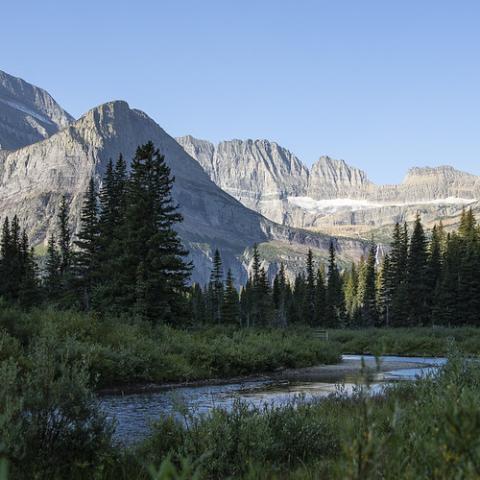
Scott Lang, assistant fire effects crew leader, measures precipitation on the last day in October at the West Glacier COOP Weather Station. October was the rainiest month on recor/NPS
In the past 102 years, there has not been a wetter month at West Glacier, Montana, in Glacier National Park than last month. Nearly 11 inches of rain fell there in October, when there were just three days without measurable precipitation.
The weather station is a partnership project with the National Weather Service, the Regional Climate Center, and the National Centers for Environmental Information. The data helps the park and surrounding community anticipate the severity of the summer fire season, and in more recent years, to study and document extreme weather patterns and the effects of climate change.
"Historically, June has been the month with the most precipitation, closely followed by January and then December," said lead fire effects specialist Michael McClellan. "But not this year, obviously."
The Fire Management Program monitors the weather station in West Glacier, sending someone out at 4 p.m. every day to measure precipitation and temperature. The station is one of three actively monitored each day by employees at the park. The other two are in St. Mary and East Glacier.
“The unexpected early October severe weather and subsequent ongoing precipitation temporarily hampered efforts to remove the guardrails from the Going-to-the-Sun Road, encasing the road and rails in more than six inches of ice,” said park Chief of Maintenance Jim Foster. “However, road crews got a break in the weather on October 25 and we were able to remove the last of the rails, preventing potential avalanche damage over the winter.”
The previous precipitation record at the West Glacier weather station was set in December of 1917 at 9.48 inches. However, data collection at that time was done monthly and subject to error.
West Glacier COOP Weather Station October Precipitation Highs:
- 2016: 10.60’’ – October 3rd, 12th, and 24th were the only days that did not have measurable amounts of rain.
- 2012: 6.18’’
- 1933: 5.96’’
- 1950: 5.87’’
- 1930: 5.64’’
West Glacier COOP Weather Station Monthly Records:
- January 2006: 7.66’’
- February 1940: 5.87’’
- March 2014: 6.49’’
- April 2011: 4.72’’
- May 1996: 6.09’’
- June 2012: 7.90’’
- July 1993: 5.11’’
- August 1954: 5.14’’
- September 1968: 6.17’’
- October 2016: 10.60’’
- November 1995: 7.53’’
- December 1917: 9.48’’, December 1964: 7.42".
Notes: December 1917 from monthly weather summary. The park does not have daily records from that time period. November 1917 showed only .14’’ so potentially there was some carryover in record keeping.
Records are taken from the best available data. The park has copies of monthly weather summaries starting in 1914 and daily records have been entered into the park’s weather database beginning in 1945.




 Support Essential Coverage of Essential Places
Support Essential Coverage of Essential Places






